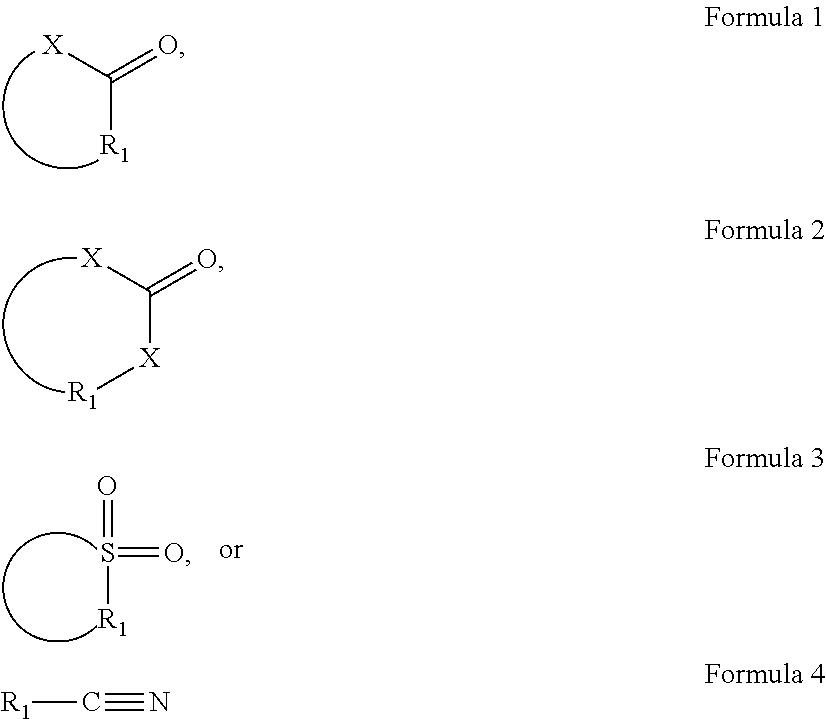Hybridization Compositions and Methods
a composition and hybridization technology, applied in the field of water-based compositions, can solve the problems of affecting the standard hybridization technique, affecting the hybridization process, so as to achieve flexible and reliable hybridization procedures, high sensitive effects
- Summary
- Abstract
- Description
- Claims
- Application Information
AI Technical Summary
Benefits of technology
Problems solved by technology
Method used
Image
Examples
examples
[0152]Reference will now be made in detail to specific embodiments of the invention. While the invention will be described in conjunction with these embodiments, it will be understood that they are not intended to limit the invention to those embodiments. On the contrary, the invention is intended to cover alternatives, modifications, and equivalents, which may be included within the invention as defined by the appended claims.
[0153]The reagents used in the following examples are from Dako's Histology FISH Accessory Kit (K5599) and Cytology FISH Accessory Kit (K5499) (Dako Denmark A / S, Glostrup Denmark). The kits contain all the key reagents, except for probe, required to complete a FISH procedure for formalin-fixed, paraffin-embedded tissue section specimens. All samples were prepared according to the manufacturer's description. The Dako Hybridizer (S2450, Dako) was used for the digestion, denaturation, and hybridization steps.
[0154]Evaluation of FISH slides was performed within a ...
examples 1-20
[0157]The slides with cut formalin-fixed paraffin embedded (FFPE) multiple tissue array sections from humans (tonsils, mammacarcinoma, kidney and colon) were baked at 60° C. for 30-60 min, deparaffinated in xylene baths, rehydrated in ethanol baths and then transferred to Wash Buffer. The samples were then pre-treated in Pre-Treatment Solution at a minimum of 95° C. for 10 min and washed 2×3 min. The samples were then digested with Pepsin RTU at 37° C. for 3 min, washed 2×3 min, dehydrated in a series of ethanol evaporations, and air-dried. The samples were then incubated with 10 μL FISH probe as described under the individual experiments. The samples were then washed by Stringency Wash at 65° C. 10 min, then washed 2×3 min, then dehydrated in a series of ethanol evaporations, and air-dried. Finally, the slides were mounted with 15 μL Antifade Mounting Medium. When the staining was completed, observers trained to assess signal intensity, morphology, and background of the stained sli...
examples 21-22
[0158]Slides with metaphases preparation were fixed in 3.7% formaldehyde for 2 min, washed 2×5 min, dehydrated in a series of ethanol evaporations, and air-dried. The samples were then incubated with 10 μL FISH probe as described under the individual experiments. The samples were then washed by Stringency Wash at 65° C. 10 min, then washed 2×3 min, then dehydrated in a series of ethanol evaporations, and air-dried. Finally, the slides were mounted with 15 μL Antifade Mounting Medium. When the staining was completed, observers trained to assess signal intensity and background of the stained slides performed the scoring as described in the scoring for guidelines for tissue sections.
Scoring Guidelines of Tissue Sections
[0159]The signal intensities were evaluated on a 0-3 scale with 0 meaning no signal and 3 equating to a strong signal. The cell / tissue structures are evaluated on a 0-3 scale with 0 meaning no structure and no nuclei boundaries and 3 equating to intact structure and clea...
PUM
| Property | Measurement | Unit |
|---|---|---|
| concentration | aaaaa | aaaaa |
| pH | aaaaa | aaaaa |
| pH | aaaaa | aaaaa |
Abstract
Description
Claims
Application Information
 Login to View More
Login to View More - R&D
- Intellectual Property
- Life Sciences
- Materials
- Tech Scout
- Unparalleled Data Quality
- Higher Quality Content
- 60% Fewer Hallucinations
Browse by: Latest US Patents, China's latest patents, Technical Efficacy Thesaurus, Application Domain, Technology Topic, Popular Technical Reports.
© 2025 PatSnap. All rights reserved.Legal|Privacy policy|Modern Slavery Act Transparency Statement|Sitemap|About US| Contact US: help@patsnap.com



